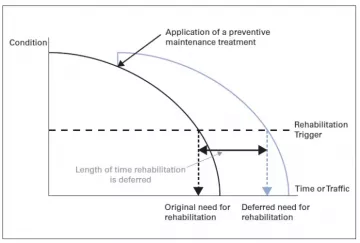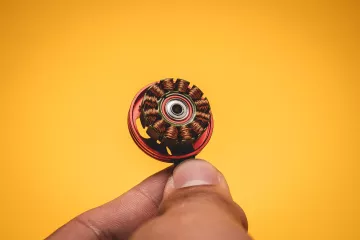Structural Health Monitoring: Precise Data as a fundament for Structural Integrity
Structural Integrity, as an engineering discipline exists to ensure the structure or a component of a structure is fit for purpose and can continue to be so. Meaning it can support the basic features it was designed to carry – carrying its weight, the weight added onto it, the mechanical load on it, without prediction of potential deformation, cracks, catastrophic failures.
The Necessity for Structural Health Monitoring (SHM) and basic definition of its aim
The shift from simple experimental observation of complex structure to its Structural Health Monitoring as a serious discipline has been driven by two factors:
- the degradation and deterioration of construction materials (as well as lack of economic efficiency while integrating these materials into larger infrastructures);
- the availability of less expensive, yet more durable and efficient tools and instruments as well as software-boosted systems, that in combination may help accomplish the data collection/signal processing tasks necessary to maintain longer structural integrity.
SHM is fundamentally the intelligent combination of traditional theoretical structural mechanics, material science, electronics, with innovative data acquisition, and software automated technologies.
The general aim of applications in this discipline is to achieve structures that have safety and reliability characteristics that vastly differ from traditional ones, in a positive manner.
Initially, the traditional means of monitoring of I.e aircraft was based on the hours of flight or cycles of landing it had performed. This made it necessary to retire these aircraft in a pre-defined number of hours. With the development of systems connected to load cycles and fatigue, the science boosted the possibilities: fatigue meters were developed which counted of divergence of the present(positive and negative) g-levels during use. Further down the line of course, much more advanced systems came along such as Flight Data Recorder (FDR), Electro-Mechanical Mission Computer (EMMC), etc.
The Aircraft Structural Health Monitoring was not the only SHM focus area neither. In the early days, non-destructive testing (NDT) methodologies were brought to civil engineering through the ’40s. It was brought by the increasing necessity of the engineers to perform in-situ determination of homogeneity and strength(especially the compressive strength) of fresh concrete (i.e. for formworks removal).
The techniques of I.e. rebound hammer, pull-out test, etc. are systematized and based on surface hardness measurements. The ageing of structures increased the need for systems and tools that would allow detection of hidden, under-surface defects, as well as estimation of changes in mechanical properties in the materials.
Structural Health and Integrity are of course supposed to be considered before the construction has started, and after the construction is done – there should be relevant warranties of proper condition, and maintenance strategies suggested for the structure.
One of the main no-brainers is that a structure requires periodical maintenance checks to ensure its integrity to continue being used with the same load, help predict the upcoming requirements for Maintenance and the means to prevent Structural Health decline.

An example of Pavement Condition Rehabilitation options
Common Structural Health Monitoring (SHM) methods
The main common steps of SHM are:
- determination of a damage existence;
- determination of the specific location of the damage;
- calibration of the volume of the damage intensity;
- prediction of the Remaining Structure Life in accordance with the damage.
Depending on the method of the SHM used, and more specifically the kind of sensors used to carry the above-listed tasks – there are different possible outcomes, with different success rates. We tried to identify the most commonly used ones, and identify the trends connected to these.
Structural health monitoring is commonly performed in two main ways – passive and active. Passive SHM mostly measures various operational parameters and then uses those as evidence to determine the state of a structure. As useful as this method is, it does not directly detect and focus on the essence of the issues.
As opposed to the passive SHM, the active SHM is focused on directly assessing structural health through structural damage detection as such.
This active SHM way combines especially the non-destructive evaluation (NDE) methodologies, by taking them to the next level. Instead of just performing non-destructive tests once in a while, the active SHM aims to develop damage detection infrastructures, powered by sensors that can be permanently installed on the structure and provide on-demand data on Structural Integrity.
Over the years NDT methods have gained vast interest from the industry due to the generally positive outcome they provide for the SHM. The most commonly used NDT performed today are surface tests like dye penetrants or magnetic particle technologies. In power generation, oil and gas, manufacturing, and other industries, Eddy Current testing is a famous one as it is a rather accurate way to inspect tubing, bolt holes, bars, etc. (it is capable of detecting both surface and subsurface defects). However, current conventionally used methods also have some downsides to them according to scientific records and claims of professionals like;
- Coin tapping – simple but time-consuming, predominantly not accurate.
- Vibration analysis – real-time possibility, but it is hard to determine damage severity.
- Thermography – non-contact, fast detection, needs a vibration-free environment.
- Optical – limited by the information from the surface and/or dusty environment.
- Ultrasound – time-consuming, suffers attenuation, scattering, absorption.
- Radiography methods – high resolution, expensive, time-consuming.
- Eddy Current testing – limited penetration depth, the surface must be accessible.
An unprecedented approach as a Structural Health Monitoring method
RVmagnetics strives to utilize an active SHM methodology through a unique MicroWire sensing system that provides on-demand, data (pressure, temperature, vibrations, tensile, compression torque forces, etc.) with no physical contact or wiring necessary, which can be collected and used to make the Predictive Maintenance AI smarter as time goes by.
The cornerstone of the technology is the MicroWire. It is the world’s smallest passive sensor. One of the main added values it provides is the possibility to have it integrated into essential structural components.The MicroWire is thin (3–70 µm) and flexible, so it does not increase an additional weight or cause any physical deformation on an application
The data these sensors provide is extremely accurate even though no physical contact or wiring is necessary in the vicinity of up to 10 cm distance from them. The signal is processed through Magnetic field (only a few mA necessary to generate).
Eventually, the system enables NDT in real-time, thus enabling the on-demand data acquisition discussed if we have the active SHM methods. This, on top of the safety-critical necessity to perform SHM, also adds a component of stratification of the structures in question.
Whether it is reinforced concrete, petal or steel sheets, bearings or even screws – this solution can equip the application with temperature, stress, vibration, and other measurements. In addition to this, the two especially productized spheres are the Monitoring of Colled rolled steel Sheets and Monitoring of Composite Materials as such.



